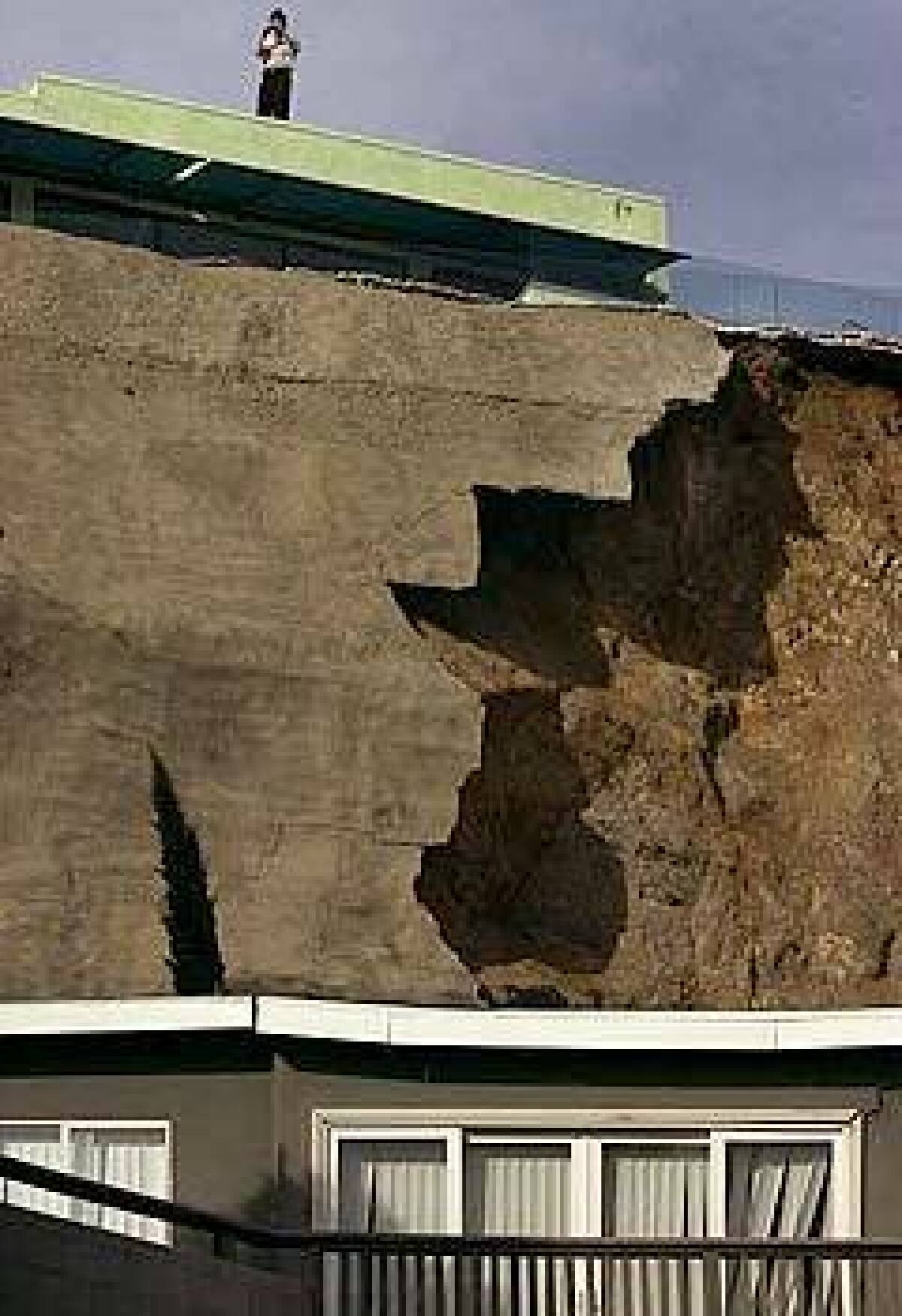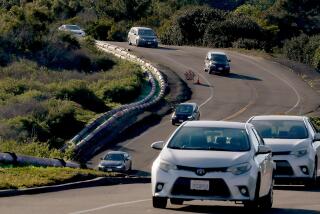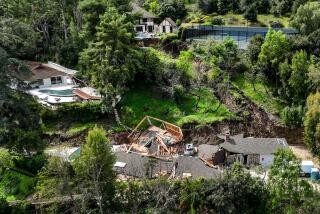When nature fights back

With a rumble that sounded like a freight train, a sliding hillside slammed into Paul DePace’s Hollywood Hills bungalow, knocking the wood-frame structure 12 inches off its foundation.
DePace escaped without injury, but building inspectors deemed the 1940s house uninhabitable — the latest casualty of Southern California’s unpredictable terrain. This week, geologists and engineers were working to figure out why a wall of dirt 4 feet high and 25 feet wide swept down the slope above DePace’s Marlay Drive house on Nov. 29.
The usual suspect is water, but in this case there had been no rain. Experts are exploring a number of other possibilities to figure out why the gunnite-covered hillside gave way: Maybe a broken pipe or a faulty sprinkler head had saturated the slope with water. Maybe water had seeped from a crack in a neighbor’s pool. Or maybe storm runoff had weakened the hillside over the years by carving fissures underground.
“It’s going to take deep exploration to figure out what caused a big chunk of the hillside to break loose,” said Robert Steinbach, a spokesman for the Los Angeles Department of Building and Safety. “It was basically granite up there.”
Every year, landslides cause millions and, at times, billons of dollars in damage to California residences.
Last year, the city of Anaheim was ordered to pay $17 million to the owners of 14 homes that were destroyed after water leaking from a city reservoir triggered landslides in their Orange County neighborhood.
In February of this year, a waterline break caused a steep hillside near the Hollywood sign to collapse, carrying away the patio area of one home and leaving its swimming pool teetering on the edge of the slope.
In August, a jury awarded $900,000 to two Yorba Linda couples who claimed that the city’s faulty maintenance of a storm drain caused a landslide on their properties. “Hillsides can only take so much water for so long until the strength of the water overcomes the strength of the soil,” said engineer and geologist Ken Deppe, who owns a company that shores up sliding homes.
With more than 25 years in the business, Deppe said he has seen a number of landslides caused by something as simple as a broken sprinkler.
“Sometimes a timer will stick on the sprinklers, and the water goes on and on,” Deppe said. “Next thing you know, the hillside is sliding. It’s true that an earthquake can cause a landslide, but I would say 99.9% of residential landslides are caused by water.”
Steinbach recommends that hillside homeowners keep a lookout for excess moisture in the soil.
“If you see a moist section of hillside, and it hasn’t been raining, that is definitely cause for concern,” Steinbach said. “If you or one of your neighbors have leaky water pipes, it can lubricate the landslide.”
Department of Building and Safety officials offer hillside residents tips on preventing slides. They include:
Make sure that all drainage is directed toward the street by using channels, ground gutters, paved swales or yard drains.
Check slopes for large amounts of loose soil, rocks, brush or debris that could act as dams for silt.
And inspect retaining walls for any listing, leaning, overturning or cracking.
More to Read
Get the Latinx Files newsletter
Stories that capture the multitudes within the American Latinx community.
You may occasionally receive promotional content from the Los Angeles Times.






